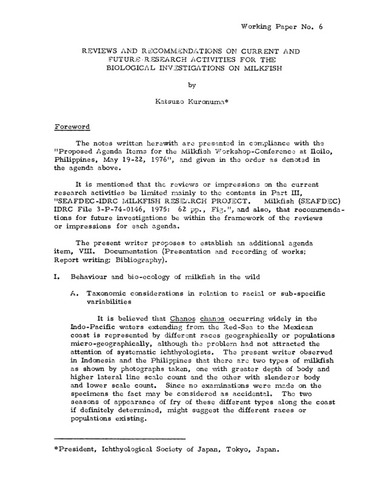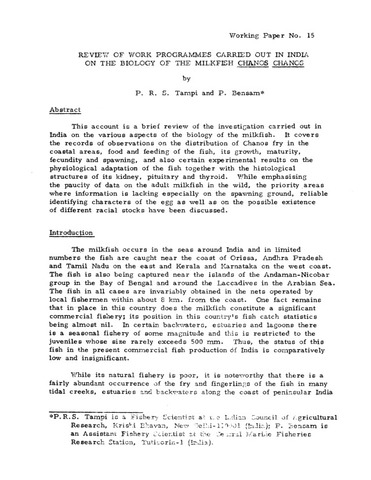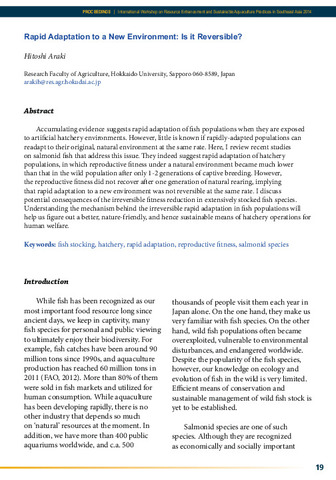Fish behaviour and aquaculture
| dc.contributor.author | Kawamura, Gunzo | |
| dc.contributor.author | Bagarinao, Teodora | |
| dc.contributor.author | Seng, Lim Leong | |
| dc.contributor.editor | Mustafa, Saleem | |
| dc.contributor.editor | Shapawi, Rossita | |
| dc.date.accessioned | 2015-11-24T01:21:06Z | |
| dc.date.available | 2015-11-24T01:21:06Z | |
| dc.date.issued | 2015 | |
| dc.identifier.citation | Kawamura, G., Bagarinao, T. U., & Seng, L. L. (2015). Fish behaviour and aquaculture. In S. Mustafa & R. Shapawi (Eds.), Aquaculture Ecosystems: Adaptability and Sustainability (pp. 68–106). Chichester, UK: John Wiley & Sons, Ltd. | en |
| dc.identifier.isbn | 9781118778548 | |
| dc.identifier.uri | http://hdl.handle.net/10862/2479 | |
| dc.description.abstract | Research in the application of fundamental concepts of fish behaviour to aquaculture has intensified recently and this chapter further elucidates fish sensory systems and functions and their involvement in the success or failure of hatchery and farm operations. Most marine fishes hatch with rudimentary sense organs that are elaborated by the time of first feeding and further improved with growth; thus, hatcheries must have the appropriate food, light and water currents for proper larval development. In grow-out farms, the ambient conditions must be at optimum or tolerable levels for the fish stock and the diets must have the right sensory characteristics to stimulate efficient feeding. Stressors for fish sensory systems include crowding, turbidity, underwater noise, chemotherapeutants, extreme pH, gas supersaturation and infection. High-density farms are stressful because the fish can sense, but cannot escape from, unfavourable conditions. Monitoring fish behaviour provides early warning of stress and disease and helps avert mortality and financial losses in aquaculture. | en |
| dc.language.iso | en | en |
| dc.publisher | John Wiley & Sons, Ltd | en |
| dc.subject | Fish behaviour | en |
| dc.subject | Mechanoreception | en |
| dc.title | Fish behaviour and aquaculture | en |
| dc.type | Book chapter | en |
| dc.identifier.doi | 10.1002/9781118778531.ch3 | |
| dc.citation.spage | 68 | |
| dc.citation.epage | 106 | |
| dc.citation.bookTitle | Aquaculture Ecosystems: Adaptability and Sustainability | en |
| dc.subject.asfa | aquaculture | en |
| dc.subject.asfa | behaviour | en |
| dc.subject.asfa | photoreception | en |
| dc.subject.asfa | fish cages | en |
| dc.subject.asfa | chemoreception | en |
| dc.subject.asfa | mechanoreceptors | en |
| dc.subject.asfa | stress | en |
Files in this item
| Files | ขนาด | รูป | View |
|---|---|---|---|
|
There are no files associated with this item. |
|||
รายการนี้ปรากฏใน (s)
-
Books and Book Chapters [123]



